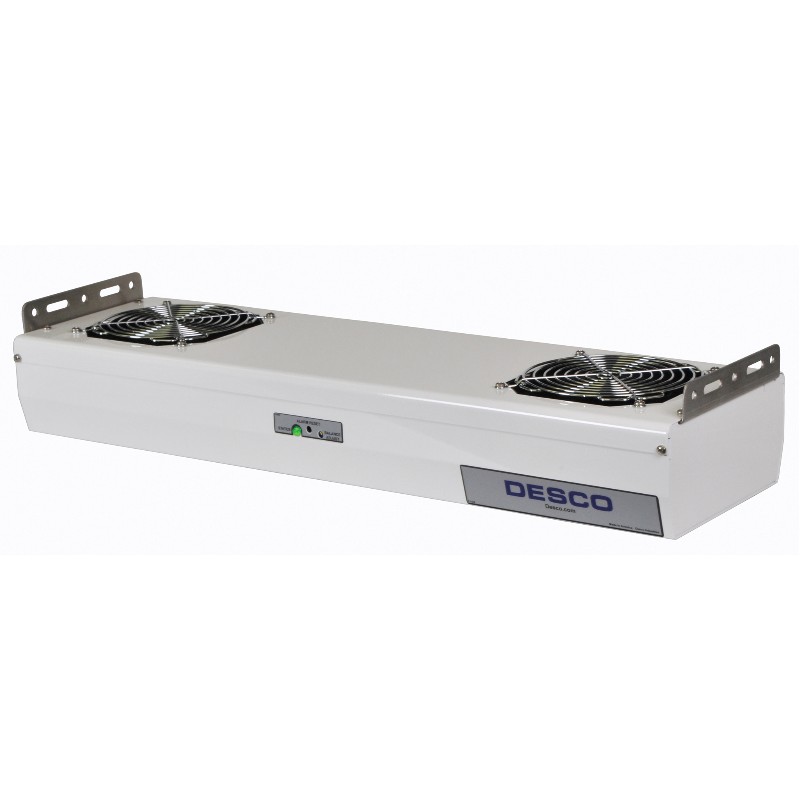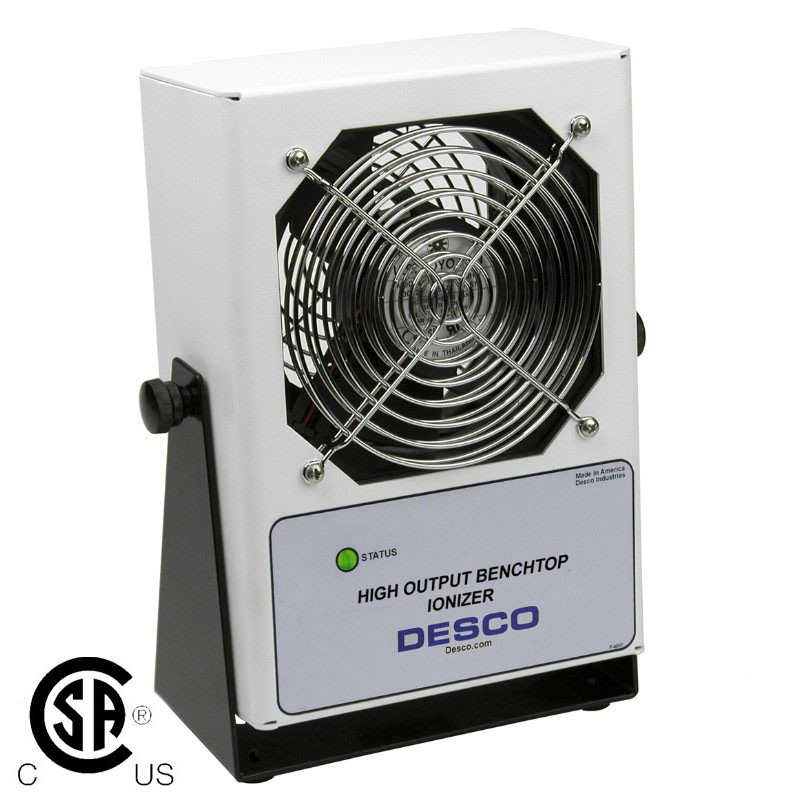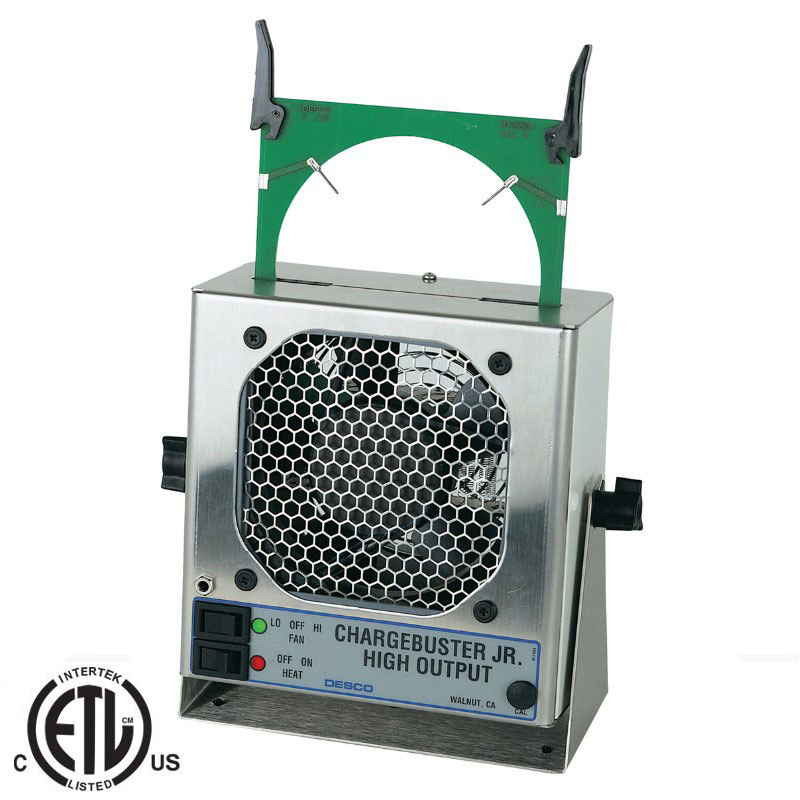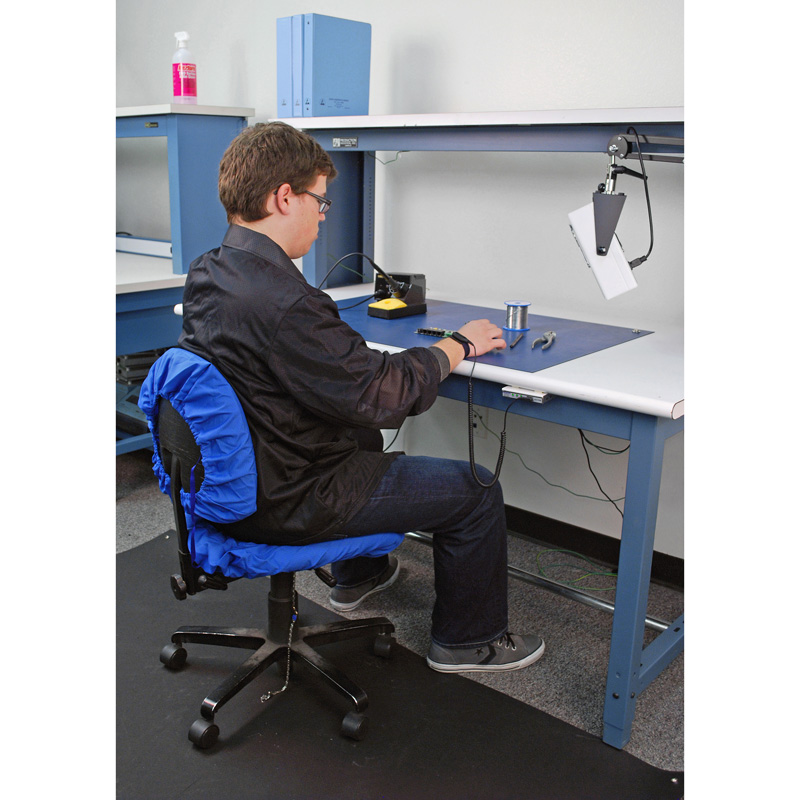Click here for
Q and A regarding Ionization
Q and A regarding Ionization
 Static Control Ionizers
Static Control Ionizers- Use ESD susceptible (ESDS) components
- Need to neutralize electrostatic fields in defined area
- Need to control charged particles with ionization
Click Here for more information
Click Here for more information
Click Here for more information
Overhead Ionizers
Desco overhead Ionizers use a steady state DC corona discharge ionization technology. Overhead Ionizers are designed to provide a maximum coverage area for neutralizing charges at the workstation. Typical applications include workstations where ESD susceptible components are used within 12” inches of an insulator or where static fields interfere with quality and productivity.
- Mounts over the workstation to not reduce work bench space
- Steady state DC corona discharge ionization technology
- Specially designed fan modules
- Maximize coverage (2’ x 5’)
- Produce consistent offset voltage (balance) ±10 Volts
- Produce fast discharge times(<3 seconds) tested per ANSI/ESD STM 3.1 and ESD TR53
- Consistent performance at all fan speeds (Low, Medium, High) allows for use with sensitive applications, such as calibration, test, or repair procedures.
- Auto-Feedback System (Audible and Visual Alarms) will automatically shut down and alarm if supply voltage drops or offset voltage goes out of balance
- 120/220 VAC Input Voltage Selectable on most items
- Lights and heaters available on some items.
- NIST Calibrated
- Made in the United States of America
| Overhead Ionizers | |||||
| Part # | Description | Input Voltage | Region | Features | Price |
| 60600 | Overhead Ionizer, 40 inches | 120VAC | North America | 3-Fan, Light and Heater | $1,073.99 |
| Chargebuster Overhead Ionizer | |||||
| Part # | Description | Input Voltage | Region | Features | Price |
| 60473 | Overhead Ionizer, 36 inches | 120VAC | North America | 3-Fan | $1,060.99 |
| 60640 | Overhead Ionizer, 24 inches | 120VAC | North America | 2-Fan | $895.62 |
Bench Top Ionizers
Desco bench top ionizers are designed to provide a concentrated coverage area for neutralizing charges at the workstation where ESDS are handled. Typical applications include workstations where ESD susceptible components are used within 12” inches of an insulator or where static fields interfere with quality and productivity.















